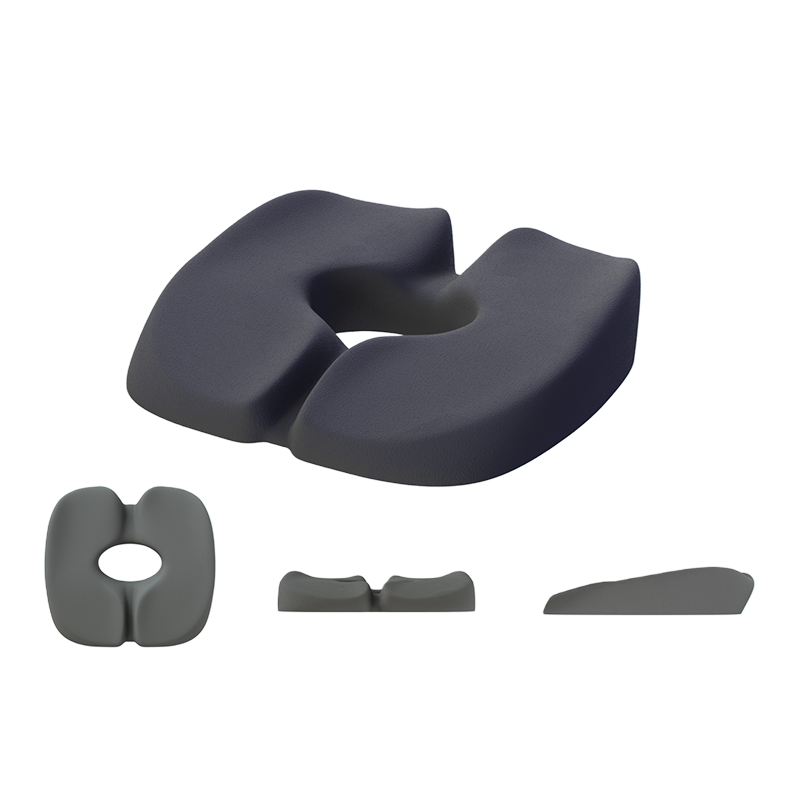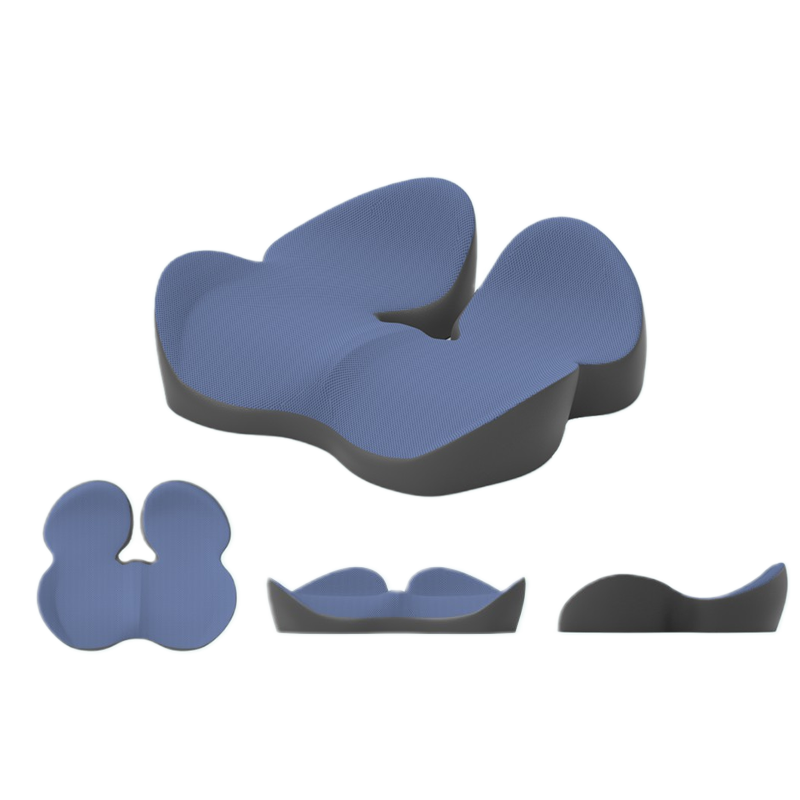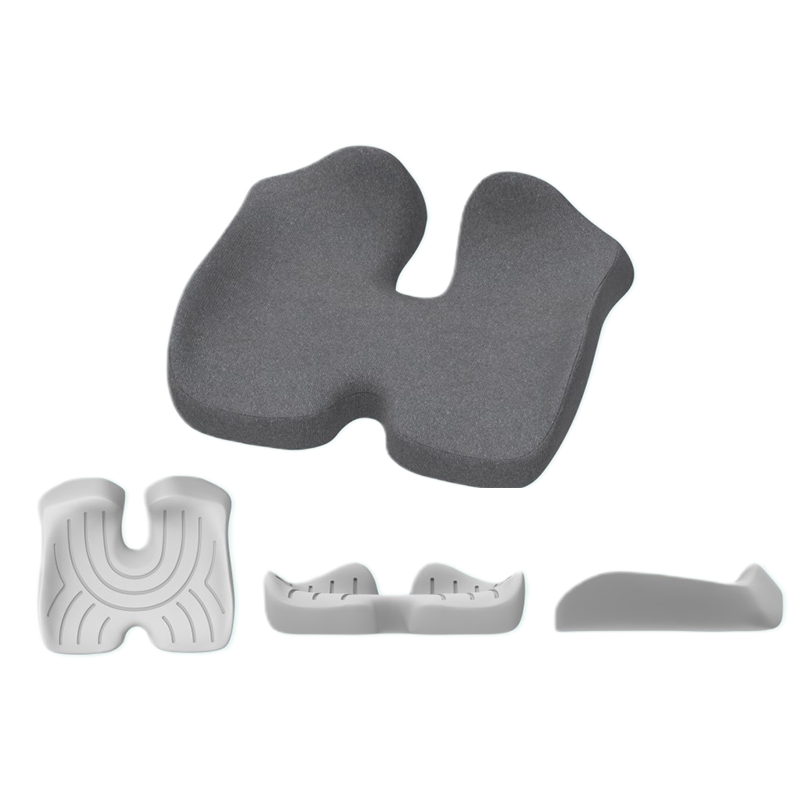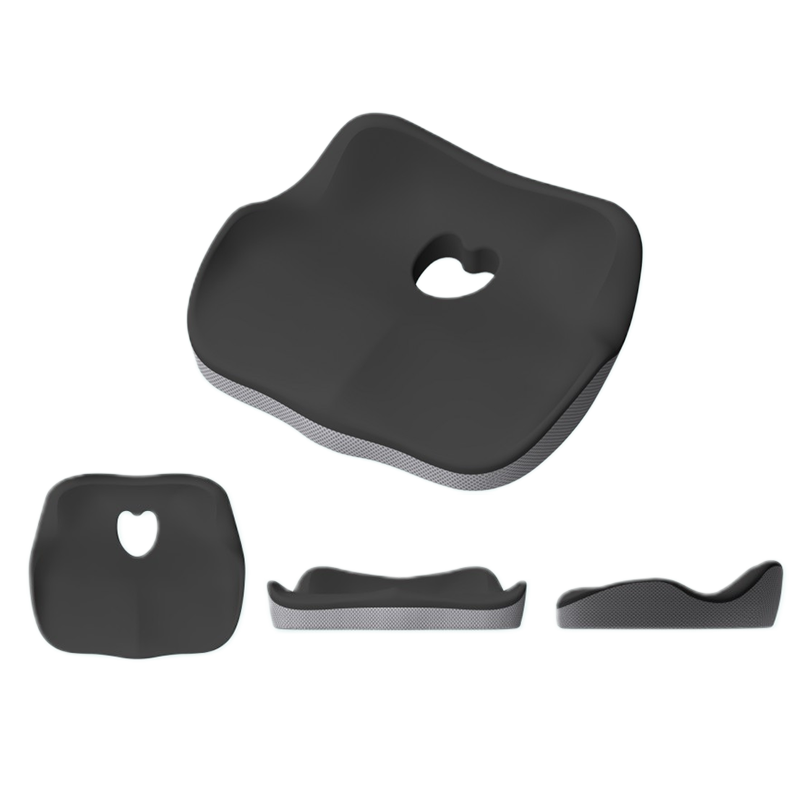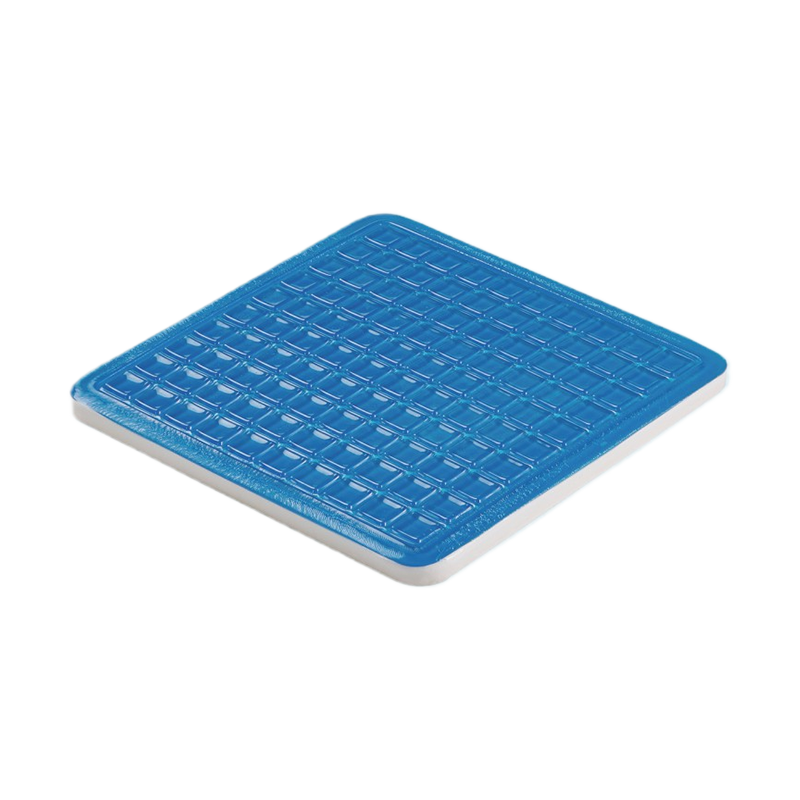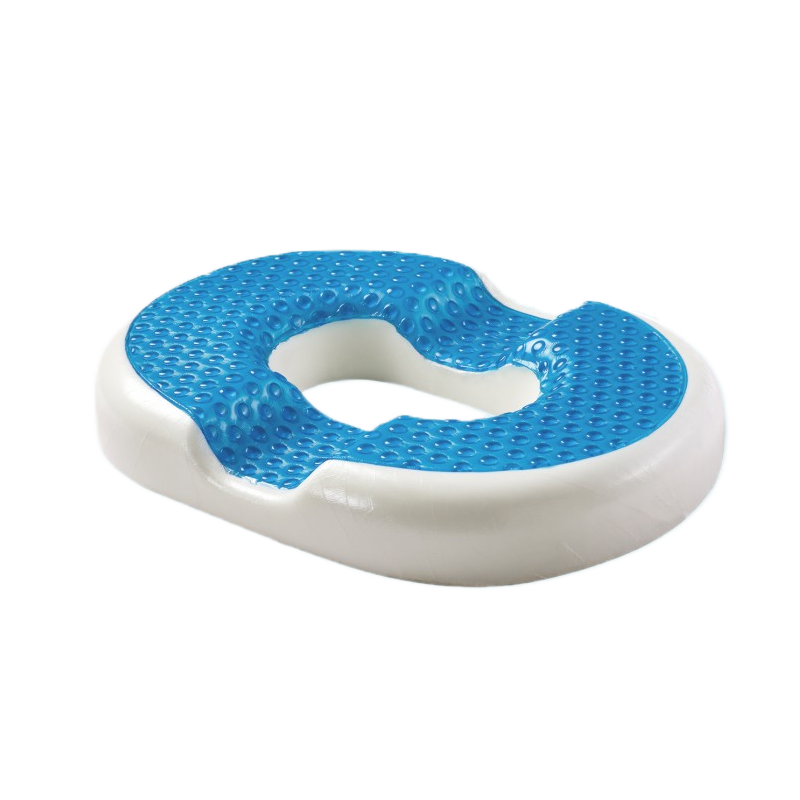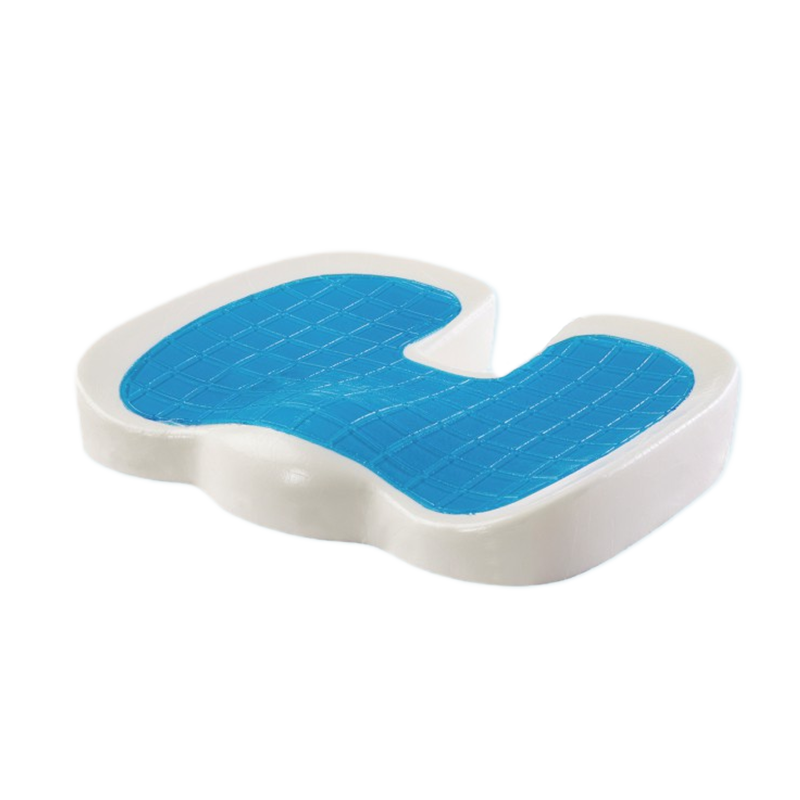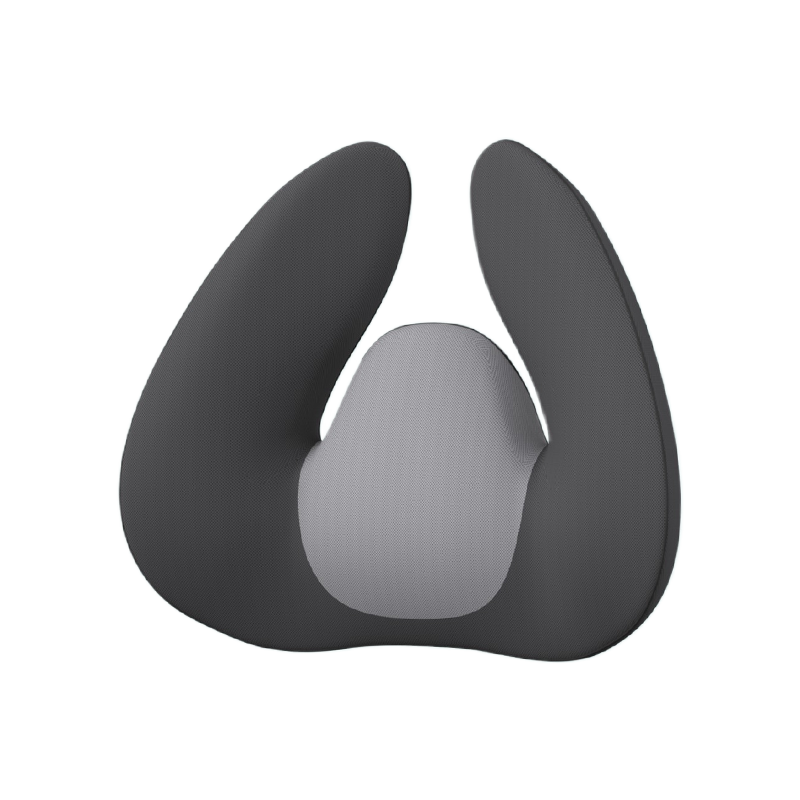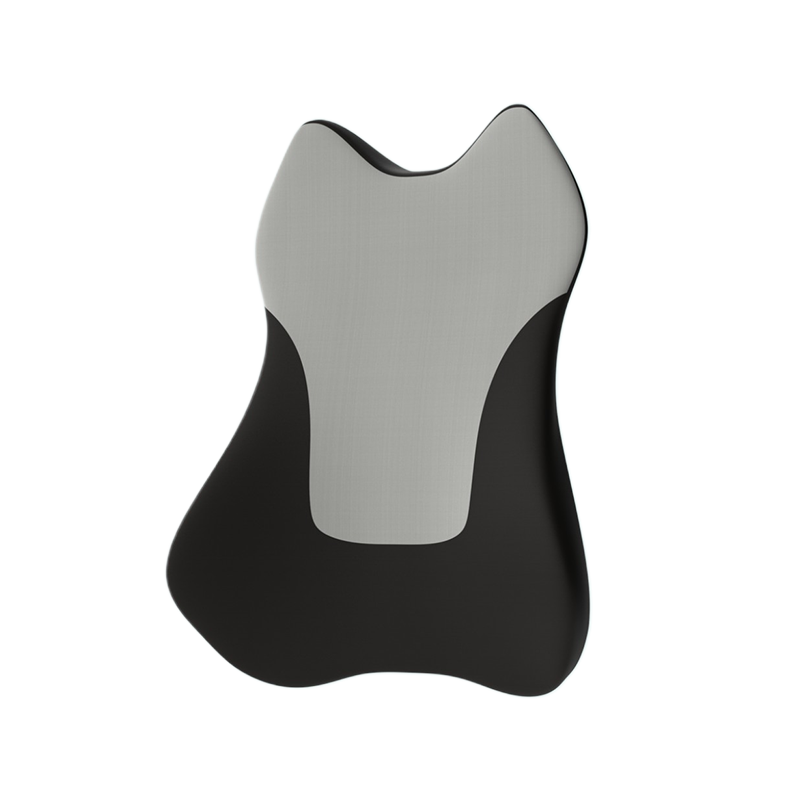The following is a detailed explanation of whether memory foam pillow sinking is normal:
1. Some sinking is a normal design consideration.
Functional sinking: The slow-rebound material softens when exposed to body temperature, naturally hugging the curve of the head and neck.
Health indicator: The depth of head sinking should be such that the nose does not press against the pillow when sleeping on your side.
2. Warning signs of abnormal sinking:
Excessive collapse: The sensation of sinking rapidly upon lying down (like sinking into quicksand).
Partial collapse: A bowl-shaped depression forms only in the back of the head, leaving the neck suspended in the air.
Morning stiffness: Accompanied by cervical pain or tinnitus (indicating support failure).
3. The key influence of temperature and weight.
Soft in summer, hard in winter: → Material too soft in hot summer → Increased sinking → Relieve with a cool mat → Material hardens in cold winter → Reduced elasticity → Cover with hands for warmth before bed.
Weight rule: Those over 75 kg experience a deeper normal sinking depth than those with smaller bodies.
4. The essential difference from inferior materials:
| Normal Sinking | Defective Collapse |
| Gradual RecoveryPillow regains shape within minutes of getting up | Persistent DentsHollows remain >1 hour after use |
| Consistent SupportMaintains depth for ~3 years | Rapid ThinningFlattens like a pancake within months |
| Smooth TransitionEdges blend softly into support zone | Jagged FailureCracks form like parched earth |
5. User Self-Help Guide
Normal phenomenon: No intervention is required, as sinking is a process of even pressure release.
First aid for excessive sinking: → Remove 1/3 of the filling (for removable models) → Place a folded towel under the pillowcase for temporary support → Freeze the pillow for three hours to restore its elasticity (limited to once a month).
Permanently collapsed: Discard immediately. Do not believe in "sunning pillows" as a revival trick.
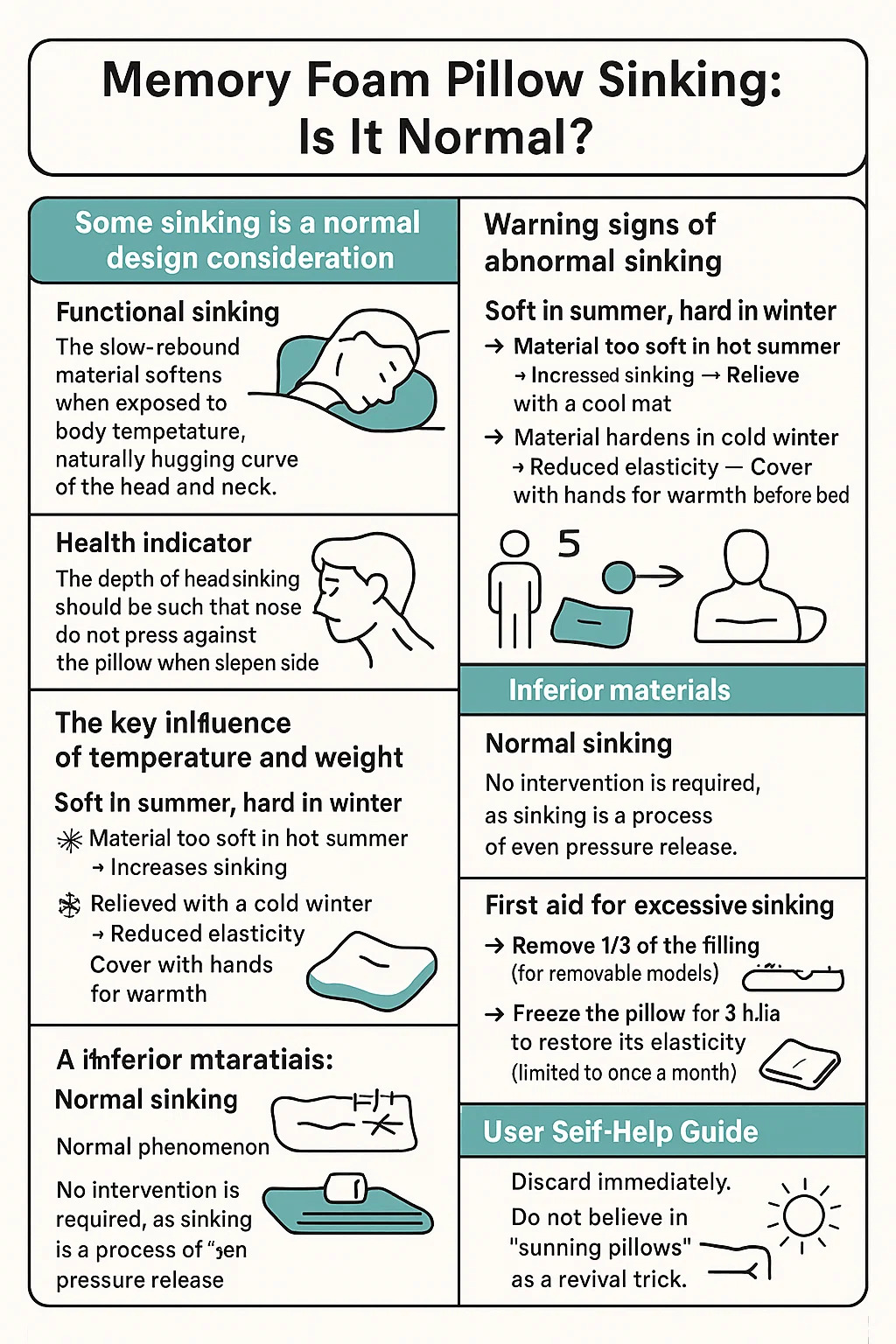



 English
English عربى
عربى
